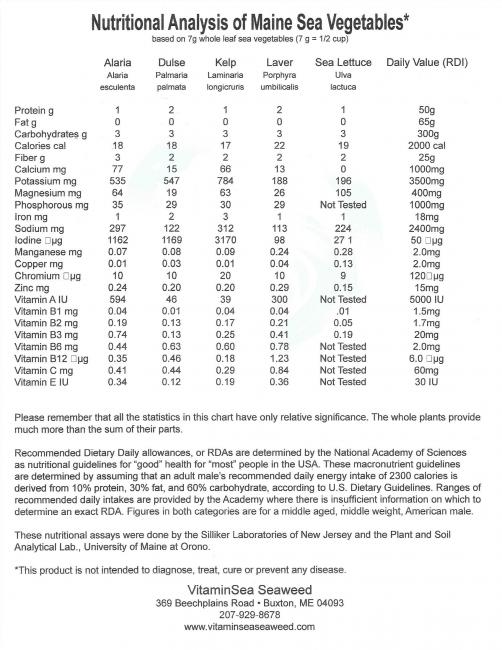Harvesting seaweed as an emergency food source
Good morning,
Above linked article is a couple of years old. Still, it is a good foundation document.
Someone around here wants to start seaweed harvesting as part of his “survival” program. Couldn’t find the current article I was looking for but this link can get one started.
-
Comments (7)
-
rebecca - July 1, 2021
The article and this post doesn’t talk about any health or medicinal uses for seaweed. Is anyone aware of some reasons why we should be harvesting seaweed?
-
Robert LarsonContributor - July 1, 2021
I’m not a fan of the fishy taste that comes with seaweed but I have tried it a few times. Even your local Walmart will probably have some dried seaweed in the health food section or Asian food aisle, so try it first to see if you can stomach it. If you do like it, there are many varieties of spiced and seasoned dried seaweeds you can get from Asian grocery stores.
Most Americans get their iodine from salt but my wife stays away from processed salts where this would be added and so she takes seaweed capsules as a supplement for the iodine. Iodine is going to be good for your thyroid which then affects your overall health.
-
Peter 44 - July 1, 2021
I live in Florida and we see seaweed all the time. I have never thought of it as a food source until this post, so I looked into it and found this chart—
So it looks like a good source of vitamins and minerals. Not very calorically dense, but could be a good side dish. I’m going to pick some up on my next beach trip and try it out.
I have thrown some bull kelp at my wife before to tease her and it was very rubbery. So I’m curious how it will taste and the texture. Probably like chewing on a salty piece of wet rubber.
-
-
RedneckContributor - July 1, 2021
Looks like you would expend far more energy eating the seaweed than the calories provided. Then you add on the calories expended harvesting & processing, you would definitely burn more calories than gained. Granted, they have some really nice nutrition but so do vitamin tablets or other garden foods.
I do like to keep Kombu. It is a dried kelp that Asians use as a broth base. It also will tenderize dried beans & will greatly remove their ability to generate gas in your body. It makes eating dried beans much more civilized. 🙂
-
Roger Greene - July 1, 2021
Seaweed is a common item in many Asian cuisines. It is mostly used in soups and salads. It can be very tasty if prepared well. Lots of vitamins and minerals as well but not many calories.
-
Bob - July 2, 2021
Good morning,
Appreciate the comments to this subject.
A couple of relies:
I posted this link to get started into maritime botany “harvesting”. About a third of national population lives in a coastal county. Harvesting also incorporates the word “foraging” … like a group collecting or harvesting acorns or dandilions. Don’t consider ConAgra or Cargill industrial farming ! Less an emergency food situation – and environment – permits and licenses to fill a file cabinet are required.
We started this research re the food aspects; not the medical/pharma uses – although some preppers know how to use this stuff for medical purposes. It takes training and practice.
A short while ago I posted somewhere at TP.com my group serving fried and baked eel grass. Very good – along with the rest of the seafood.
Redneck; The marine botany products for food have a greated ROI than land agriculture. Analogy can be railroads must own or have some sort of leasehold on their right of way. An airline uses public maintained routes.
-
Josh CentersContributor - July 8, 2021
If you have easy access to it, seaweed is a great addition to your garden beds and/or compost pile. It’s pretty low in NPK, but rich in ocean minerals. Kelp meal is pretty expensive on the shelf.
-
- News for the week of 2025-07-14 - 9 hours ago
- News for the week of 2025-07-07 - 1 week ago
- Fun ways to teach kids outdoor/survival skills - 2 weeks ago
- News for the week of 2025-06-30 - 2 weeks ago
- News for the week of 2025-06-23 - 3 weeks ago
This forum is heavily moderated to keep things valuable to as many people as possible. Full community policies are here. The basics:
- 1. Be nice to each other.
- 2. Stay focused on prepping.
- 3. Avoid politics, religion, and other arguments.
- 4. No unfounded conspiracies, fake news, etc.
- 5. Debate ideas, not people.
